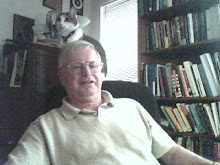Pilot, 90, recalls narrow escapes in WWII
Shot down, Pisanos joined French Resistance
By Vincent Rossi, SPECIAL TO THE UNION-TRIBUNE
Thursday, March 11, 2010 at 12:04 a.m.
John Gastaldo / Union-Tribune
Retired Air Force Col. Steve Pisanos was awarded the French Legion of Honor Medal by David Martinon, consul general of France, at a ceremony last week at the San Diego Air and Space Museum in Balboa Park.
Online: To see a photo gallery of Steve Pisanos’ medal ceremony Saturday, go to uniontrib.com/pisanos.
RANCHO BERNARDO — What Steve Pisanos lived through as a downed flier in Nazi-occupied France during World War II sounds like a movie, but it was real.
Pisanos narrowly escaped death, first in the crash of his fighter plane in the French countryside, then at the hands of German soldiers pursuing him after the crash. Literally dodging machine gun bullets, Pisanos managed to lose the soldiers in some woods.
That was just the beginning of the pilot’s odyssey. Saved from capture by members of the French Resistance, Pisanos soon joined their ranks. For five months Pisanos participated in sabotage and other combat missions with his underground comrades. He was able to rejoin Allied lines after the liberation of Paris in August 1944.
Last September, by a decree of French President Nicolas Sarkozy, Pisanos was named a Chevalier, or knight, of the Legion of Honor, France’s highest decoration. He formally received the medal from the French consul general of Los Angeles in a ceremony Saturday at the San Diego Air and Space Museum in Balboa Park.
In his letter to Pisanos announcing the award, French Ambassador to the United States Pierre Vimont called it “a sign of France’s true and unforgettable gratitude and appreciation for your personal, precious contribution to the United States’ decisive role in the liberation of our country during World War II.”
Pisanos, who lives in Rancho Bernardo, was born in Athens, Greece, in November 1920. He arrived in the United States in 1938 after jumping ship from a Greek freighter. He found a job, learned English and earned a pilot’s license in 1940.
The next year, he sought to become an American fighter pilot to battle Germany but was turned away because he wasn’t a U.S. citizen. He then joined the Royal Air Force under a program for allied volunteers. With the nickname “The Flying Greek,” he flew British and American fighter aircraft against coastal targets.
He hooked up with one of the American Eagles RAF volunteer squadrons, which were integrated into the U.S. Army Air Forces in 1942. He became a U.S. citizen in May 1943.
His first confirmed aircraft kill was in May 1942 in a P-47. On March 5, 1944, while on a bomber escort mission in a P-51B, he shot down four enemy aircraft, bringing his total to 10. But on that same day, his plane’s engine failed, and he was forced to crash-land south of Le Havre, France. During the crash, Pisanos jumped from the plane and dislocated his shoulder. French Resistance fighters helped him escape and even found care for his shoulder from a German doctor by forging identification papers.
The memories of that period remain vivid for Pisanos, animated and jovial at 90. He talks of being driven from a safe house in the countryside to one in Paris in a truck that was also ferrying machine guns for the Resistance.
The guns were hidden under burlap sacks and firewood. Pisanos was sitting on top of them. Suddenly, two German soldiers blocked the road, one of them aiming his Luger pistol at the truck. It turned out they just wanted to hitch a ride, a request the French driver couldn’t refuse.
The two Germans sat in the open back of the truck, on top of a pile of firewood hiding more machine guns. Pisanos’ fear of being caught began to ease as the truck passed through a number of armed checkpoints without having to stop, probably because of the soldiers in the back.
“That was our security,” Pisanos said with a grin.
The soldiers left the truck at the outskirts of Paris, and Pisanos and his partners continued on their way.
Then there was the time Pisanos and a downed British aviator, also being helped by the Resistance, had to flee a Gestapo raid about 2 a.m. in Paris. They climbed out a fifth-floor apartment bedroom window and onto a balcony, then leapfrogged their way over about five other balconies to escape.
“Thank God that the balconies in France are so close to each other,” Pisanos said.
After the war, Pisanos went on to a distinguished U.S. Air Force career, culminating in his retirement as a colonel in 1973. He has lived in Rancho Bernardo since 1978.
Pisanos’ days in France are recalled in his memoir, “The Flying Greek: An Immigrant Fighter Ace’s WWII Odyssey with the RAF, USAAF and French Resistance,” published in 2008. That same year Pisanos was inducted into the San Diego Air and Space Museum’s International Aerospace Hall of Fame.
He has contributed many artifacts from his career to the San Diego Air and Space Museum, museum President and CEO James Kidrick said. When Pisanos told Kidrick about receiving the Legion of Honor and asked if the museum could host the presentation, Kidrick didn’t hesitate.
“I love the guy,” Kidrick said. “Very few people get to experience such history firsthand. … He’s an international hero in the truest sense.”
Vincent Nicholas Rossi is a free-lance writer from Rancho Bernardo.
Find this article at:
http://www.signonsandiego.com/news/2010/mar/11/pilot-90-recalls-narrow-escapes
Subscribe to:
Post Comments (Atom)


No comments:
Post a Comment
Note: Only a member of this blog may post a comment.